Microsoft Dynamics 365 for Finance and Operations

OVERVIEW
CLOUD SERVICES
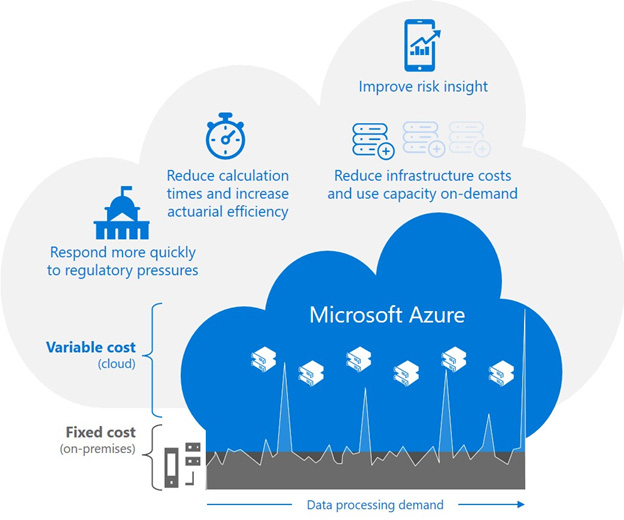
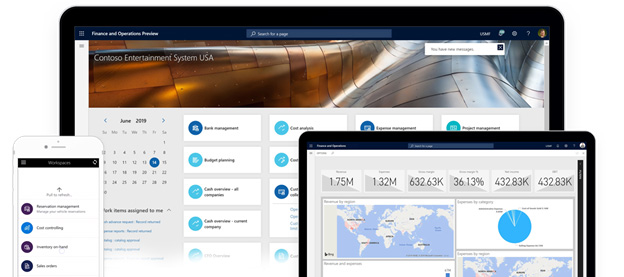
PRODUCT CAPABILITIES
FINANCIAL & ACCOUNTING
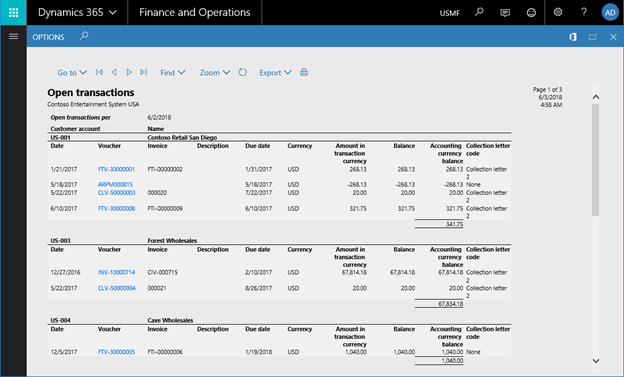
Finance
Provide a fast and efficient way to register financial transactions, manage relationships between subsidiaries and the parent organization, manage internal cost accounting, currency translation, and reports in any supported currency. Gain financial insight, help control expenditures, and support the enforcement of accounting policies and rules.
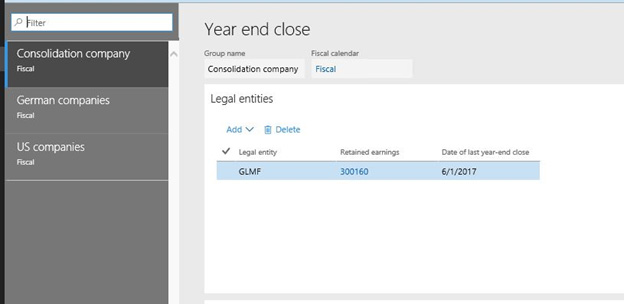
General ledger
Financial accounting with flexible configuration options for setup and maintenance of general ledger. Share data such as chart of accounts or currency exchange rates across multiple legal entities and create flexible journal entries for all account types. Use Financial period close workspace to track your financial closing processes across companies, areas, and people.
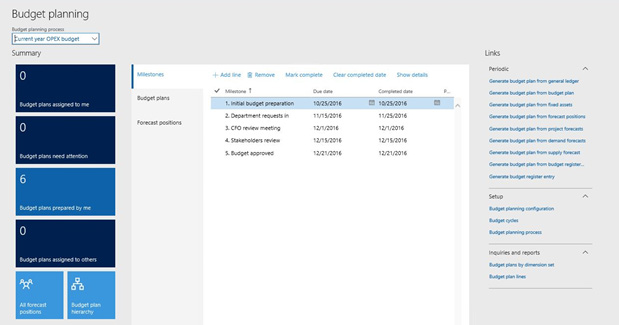
Budget planning
Manage your organization’s budget, including flexible configuration options, instant calculation of available budget funds, pooling of budgets, and budget workflows for review and approval, with configurable budget planning supporting a flexible chart of accounts and dimensions, custom-defined process configurations, workflows, and the use of Microsoft Excel to create a budget planning worksheets.
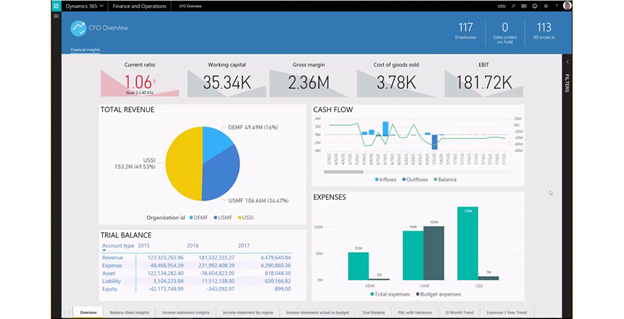
Financial reporting
Financial statements enable a custom reporting structure and mapping of ledger accounts or dimensions to the reporting structures, and cost allocation to classify with legal requirements and international accounting standards. They include balance sheet, income statement, and cash flow statement.
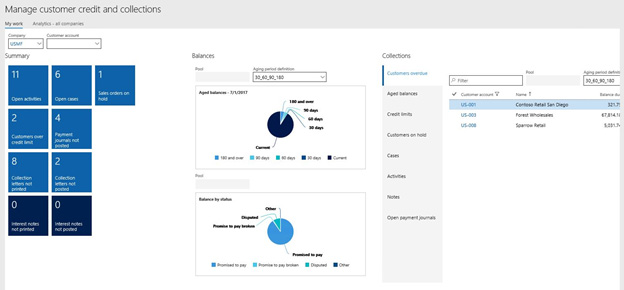
Credit and collections
Credit and collections enable enterprises to lower their days sales outstanding (DSO) and reduce credit risk. Use the credit and collections workspace to get visibility into key metrics such as open cases, activities, and customers over their credit limit. Build collections teams and organize collections using pools and cases. Use activities, notes and collections history to effectively manage collections.
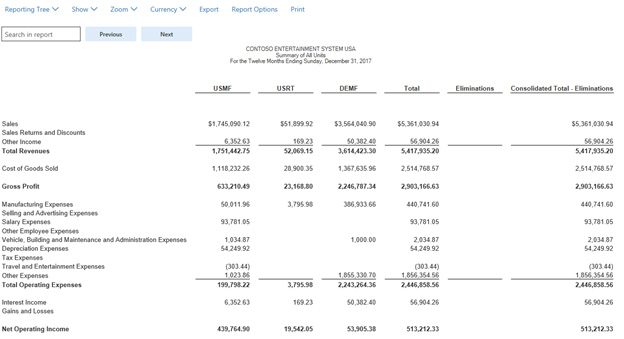
Cost accounting
Gain managerial insight into how cost flows to each level of the organization without affecting the data in financial accounting. Define allocation bases based on key statistical figures that are obtained from the source system, create rules for cost behavior, cost distribution, and cost allocation to classify and allocate costs.
MANUFACTURING
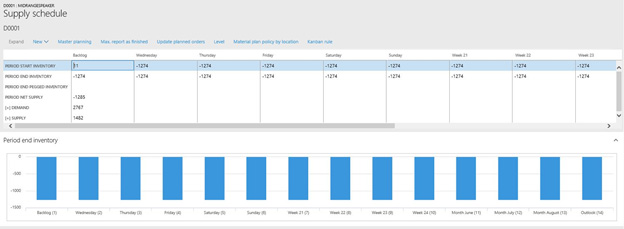
Material and capacity planning
Optimize production and materials planning, forecasting, and scheduling. Simultaneously schedule materials and capacity. Calculate available-to-promise (ATP) and capable-to-promise (CTP) deliveries. Plan and execute routing and operations. Use finite or infinite planning.
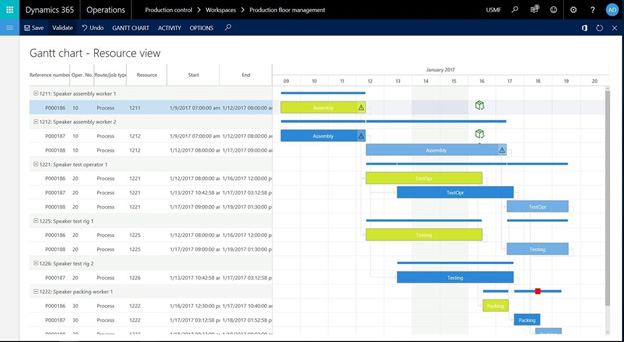
Production scheduling and sequencing
Use finite or infinite scheduling, forward and backward from various dates. Quickly (re)schedule jobs and simulate alternatives by dragging Gantt chart items. Resolve scheduling overloads by reassigning operations to alternate work centers. Optimize scheduling across the organization with a unified resource model and scheduling engine.
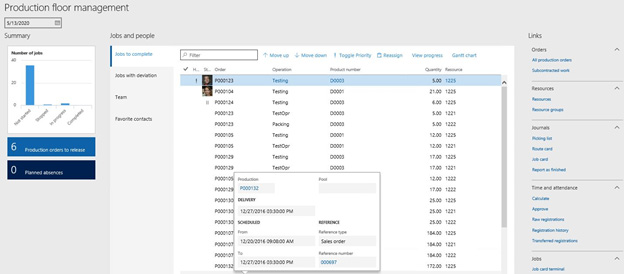
Shop floor control
Manage and track shop floor operations. Register products and resources and items for operations and jobs using a touch-enabled data entry. Provide shop floor workers visibility with an overview of the production jobs that need an attention.
SUPPLY CHAIN MANAGEMENT
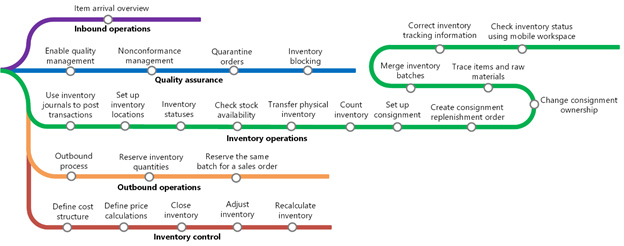
Singularity demand and supply connection
Connect sales and purchasing processes with logistics, production, and warehouse management to provide visibility and management throughout the supply chain. Manage distributed organizations with inter-company and multi-site capabilities.
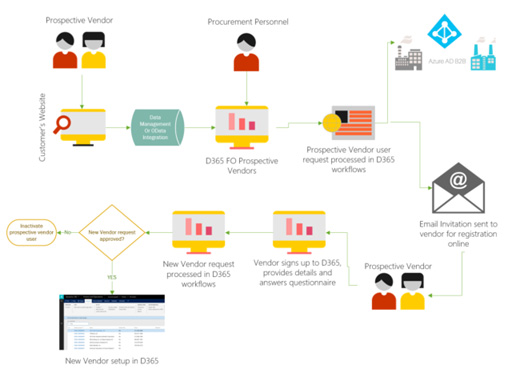
Vendor collaboration
Streamline vendor collaboration to respond to business needs and customer demands. Dynamics 365 for Finance and Operations enables vendors to work with purchase order, invoice, and consignment inventory information. Vendors can review, accept and reject purchase orders, review the status of invoices and online payment. Users can create purchase order invoices and upload invoice documents to a portal.

Inventory management
Track items by inventory dimensions, including site, warehouse, pallet, location, batch, and serial number. Take advantage of multiple inventory control systems and inventory valuation methods including first in/ first out, last in/ first out, standard cost, moving, and weighted average.
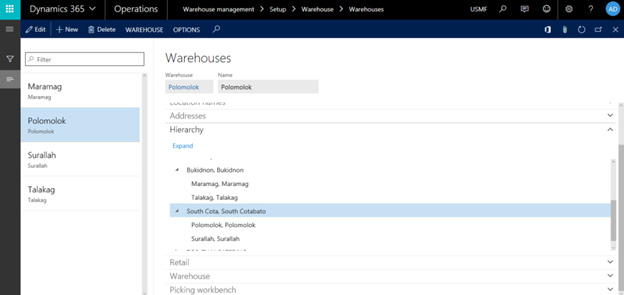
Multi-site warehouse management
Manage storage locations and material handling within warehouses. Apply advanced inbound algorithms using multiple warehouse zones and replenishment strategies. Optimize picking with a choice of picking methods. Track inventory on hand per warehouse.
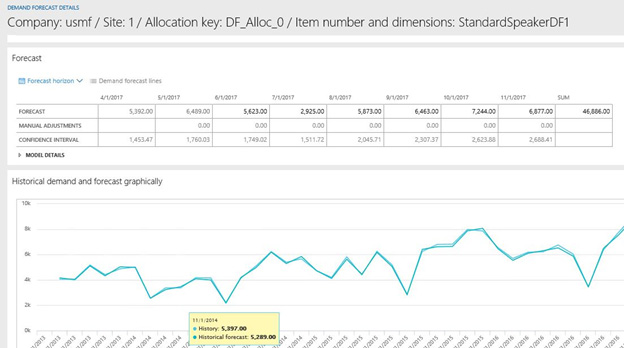
Demand forecasting
Demand Forecasting is a lightweight, yet powerful tool that enables organizations to forecast based on historical data, leverage the power of Azure Machine Learning, adjust the forecasts using Microsoft Excel, and import the values into Microsoft Dynamics 365 for Finance and Operations forecast models.
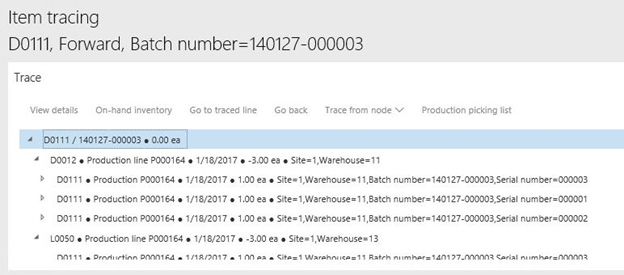
Tracking and tracing
Collect, track and trace inventory and tracking dimensions throughout the end-to-end logistic processes of the supply chain throughout inventory, warehouse, production, transport, and delivery processes. Track back batch or serial numbers for quality incidents, register and monitor batch attributes, expiry, and shelf life dates.
WORKSPACES
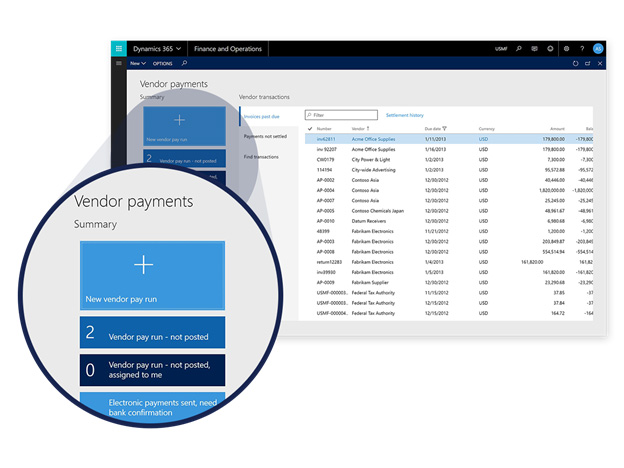
Analytical workspaces
Get a bird’s eye view of the state of your business and dive into the details to take actions. Workspaces contain rich visuals, count tiles, KPIs, and quick links to reports and action forms. Within a workspace, all controls are tightly integrated to provide a highly productive and engaging work environment for users. The info graphics provide a quick real-time view of the state of the business and users can drill down to business processes and forms to take immediate actions on issues or based on trends they uncover. Select from out-of-the-box workspaces like inventory on hand, sales orders, expense management, invoice approvals, vendor collaboration, and cost control. Users can also build their own workspaces within minutes using the built-in workspace builder.
MOBILE
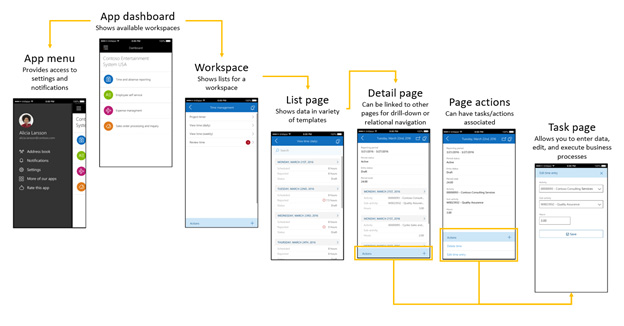
Mobile apps
Stay connected with your business on your mobile device with Dynamics 365 Finance and Operations mobile application while you are on the go. For example, you can capture and upload receipt files that can be attached to an expense report in Dynamics 365 for Finance and Operations. Use the mobile expense entry to create and maintain expenses, such as attach receipts, enter guest information, and itemize as required by company policy. Submit expense reports for approval from within the application and use the mobile invoice approvals to review and approve vendor invoices that have been submitted through workflow.
KEY BENEFITS
ORGANIZATION INNOVATION

Make smarter decisions
Unifying financial and business operations enables businesses to deliver real-time visibility across their organization for better and faster decisions.
Transform business faster
Transforming businesses by easily redesigning processes without disrupting operations is crucial for organizations to stay competitive.
Grow at your pace
Helping businesses grow at their own pace is about giving them the choice and flexibility to modernize their organizations at the pace that works for them with the ability to do business anywhere, anytime.
IMPROVED FINANCIAL PERFORMANCE

Increase profitability
Drive margin revenue growth with centralized, global financial management with real-time financial intelligence.
Reduce operational expense
Minimize OpEx with financial process automation, encumbrance, budget planning & control, and three-way matching
Increase agility
Adjust to changes with a flexible, guided, rules-based chart of accounts, dimensions, and global tax engine.
Manage assets
Track values, reduce reporting errors, and manage capitalized assets from acquisition through disposal.
Boost staff productivity
Dynamics 365 for Finance and Operations empowers employee in intelligent automation, task prioritization, and Office 365 integration.
INTELLIGENT UNIFIED OPERATIONS

Streamline manufacturing processes
Optimize discrete, lean, process, or mix-mode manufacturing across your supply chain with a unified solution
Improve manufacturing parameters
Optimize MTS, MTO, PTO, CTO, and ETO manufacturing parameters for each product family.
Shorten time to market
Optimize the flow of manufacturing material and finished goods with advanced warehouse and logistics management.
Simplify resource management
Streamline scheduling with real-time resource visibility using a unified resource model and scheduling engine.
Enhance product quality
Improve product quality by identifying and resolving issues through real time insights and predictive intelligence.
EFFICIENT, AUTOMATED SUPPLY CHAIN

Streamline procurement
Automate procure-to-pay processes to reduce costs and improve control with Microsoft Dynamics 365 for Finance and Operations.
Modernize logistics
Optimize fulfillment and reduce costs by synchronizing logistics across sites, warehouse, and transportation modes.
Unify sales and fulfillment
Seamlessly connect sales and purchasing with logistics, production, and warehousing for a 360 view of your supply chain.
Accelerate order processing
Enable faster response to customer demand with an automatic and seamless series of order-to-cash processes.
Gain actionable insights
Achieve visibility and control across all sites and warehouses for proactive issue response.
